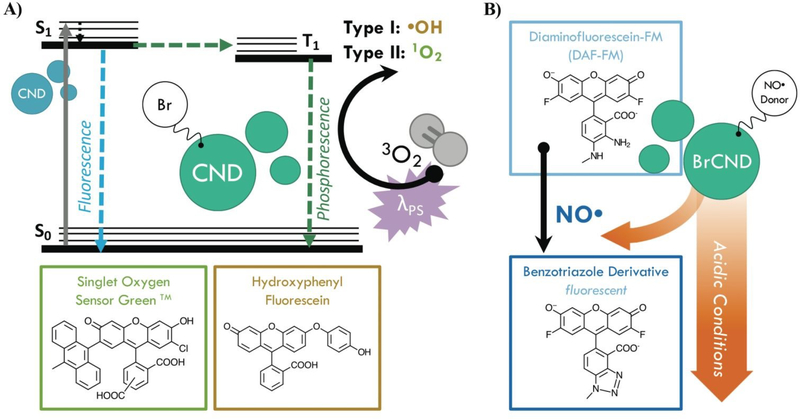Scheme 1.
Diagrams demonstrating the use of brominated carbon nanodots (BrCND) as antimicrobial agents. A) BrCND as reactive oxygen species photosensitizers. Carbon nanodots (CND) alone are only fluorescent, as shown by the Jablonski diagram. Incorporation of bromine facilitates the heavy atom effect and phosphorescence from the triplet excited (T1) state. This excited state may also generate reactive oxygen species via a Type I or Type II photosensitization pathway; products of this reaction may be detected by fluorescent probes such as Singlet Oxygen Sensor Green (SOSGTM, 1O2), or hydroxyphenyl fluorescein (HPF, •OH). B) BrCND as donors of nitric oxide under acidic cycled conditions. Products of this reaction may be detected by the fluorescence-on probe diaminofluorescein-FM (DAF-FM).

